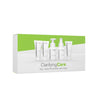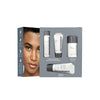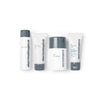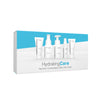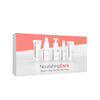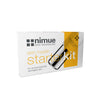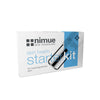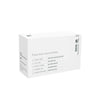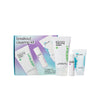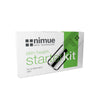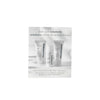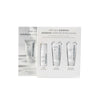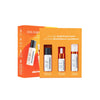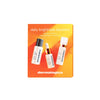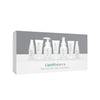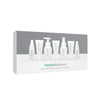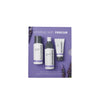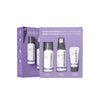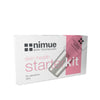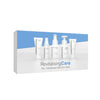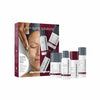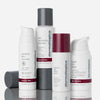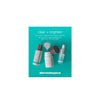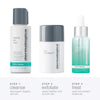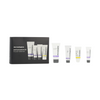Wake up each day with a glowing complexion! Your secret weapon to a radiant complexion lies inskin renewal throughexfoliation. Adding this essential step to your beauty regimen will help you say goodbye to clogged pores and welcome smoother, more radiant and healthier skin.
Our comprehensiveexfoliation guide is your road map to a glowing future, packed with insights intoexfoliation benefits, tips to strike the perfect balance for your skin type, and insider secrets on masteringexfoliation techniques.
Choosing the Right Exfoliation Types & Their Benefits
Beneath the surface lies a radiant masterpiece waiting to be revealed through thepower of exfoliation. Different skin types require different exfoliation methods.
Chemical Exfoliants
- AHAs (Alpha Hydroxy Acids): Sun damage, fine lines, and uneven tone? AHAs like glycolic acid come to the rescue, promoting cell turnover for a plumped-up radiant glow.
- BHAs (Beta Hydroxy Acids): Oily, acne-prone skin rejoice! BHAs like salicylic acid delve deep into pores, minimising breakouts and blackheads.
Physical Exfoliants
- Scrubs use tiny particles to gently clean away dead skin cells off the surface, leaving your skin to feel soft and hydrated.
Frequency of Exfoliation
- Start with 1-2 times a week for gentler exfoliation if you have sensitive or sedentary skin.
- Don't exfoliate more than 2–3 times a week.
- Exfoliating too much can make your skin irritated and sensitive.
- If you experience redness, burning, or discomfort, reduce the frequency of exfoliation or switch to a gentler exfoliant.
How to Exfoliate
- Apply the exfoliant according to the product's instructions. For chemical exfoliants, apply a thin layer and leave it on for the recommended time. For physical exfoliants, gently massage in circular motions and rinse off.
- Avoid harsh scrubbing, especially on the face, to prevent micro-tears in the skin.
Post-Exfoliation Care
- Once finished,replenish lost moisture in your skin to restore hydration. This step helps soothe the skin and lock in moisture.
- Exfoliating your skin can make it more vulnerable to the sun's rays. Use abroad-spectrum sunscreen to keep your skin safe from UV damage.
Additional Tips
- Before using a new exfoliant, perform a patch test to ensure it doesn't cause irritation.
- If you have problems with your skin, it's best to see a dermatologist for advice.
- Exfoliation isn't just for the face. Pay attention to other areas like lips, elbows, knees and feet, where dead skin can accumulate.
- Integrate exfoliation into your regular skincare routine for consistent results. This can be done before applying serums or treatments to enhance their absorption.
- If your skin is sunburned, irritated, or recovering from a procedure, avoid exfoliating until it has healed.
By understanding and implementing these tips, you can make informed choices about exfoliation practices, leading to healthier, more radiant skin.
Unlock the Benefits of Exfoliation
Immerse yourself in ourexfoliation guide and master theexfoliation techniques for flawless skin. Whether you are looking to combat dry patches, brighten a dull complexion, or smooth out texture, we source only the best products for your skin type.
Take advantage of thepower of exfoliation to accelerate skin renewal.Discover your perfect routine with our curatedrange of exfoliators. Unveil your radiant skin today with Retail Box – where luxury meets effectiveness.
FAQs and Answers
1. What are the benefits of exfoliation for the skin?
Exfoliation helps remove dead skin cells, unclog pores, and promote skin renewal. It improves skin texture, enhances radiance, and allows better absorption of skincare products.
2. How often should I exfoliate my skin?
For most skin types, exfoliating 1-2 times a week is ideal. Those with oily or acne-prone skin may exfoliate up to 2-3 times a week, while sensitive skin should exfoliate less frequently to avoid irritation.
3. What is the difference between chemical and physical exfoliation?
Chemical exfoliation uses acids like AHAs (for skin renewal) and BHAs (for deep pore cleansing) to dissolve dead skin cells. Physical exfoliation involves scrubs with tiny particles that manually remove dead skin from the surface.
4. Can I exfoliate if I have sensitive skin?
Yes, but it's important to choose a gentle exfoliant and limit exfoliation to once a week. Avoid harsh scrubs and opt for mild chemical exfoliants with soothing ingredients.
5. What should I do after exfoliating?
Always replenish moisture by applying a hydrating moisturiser. Since exfoliation increases sun sensitivity, use broad-spectrum sunscreen to protect your skin.
6. Can I exfoliate my body as well as my face?
Absolutely! Exfoliation benefits the entire body, especially areas like elbows, knees, feet, and lips, where dead skin accumulates. Use a body scrub or chemical exfoliant designed for body care.
7. What happens if I over-exfoliate?
Over-exfoliation can lead to redness, irritation, dryness, and sensitivity. If this occurs, reduce exfoliation frequency and use a gentle, hydrating skincare routine to allow your skin to recover.
8. Should I exfoliate if my skin is sunburned or irritated?
No, avoid exfoliation if your skin is sunburned, inflamed, or recovering from a procedure. Wait until your skin is healed before resuming exfoliation to prevent further irritation.






